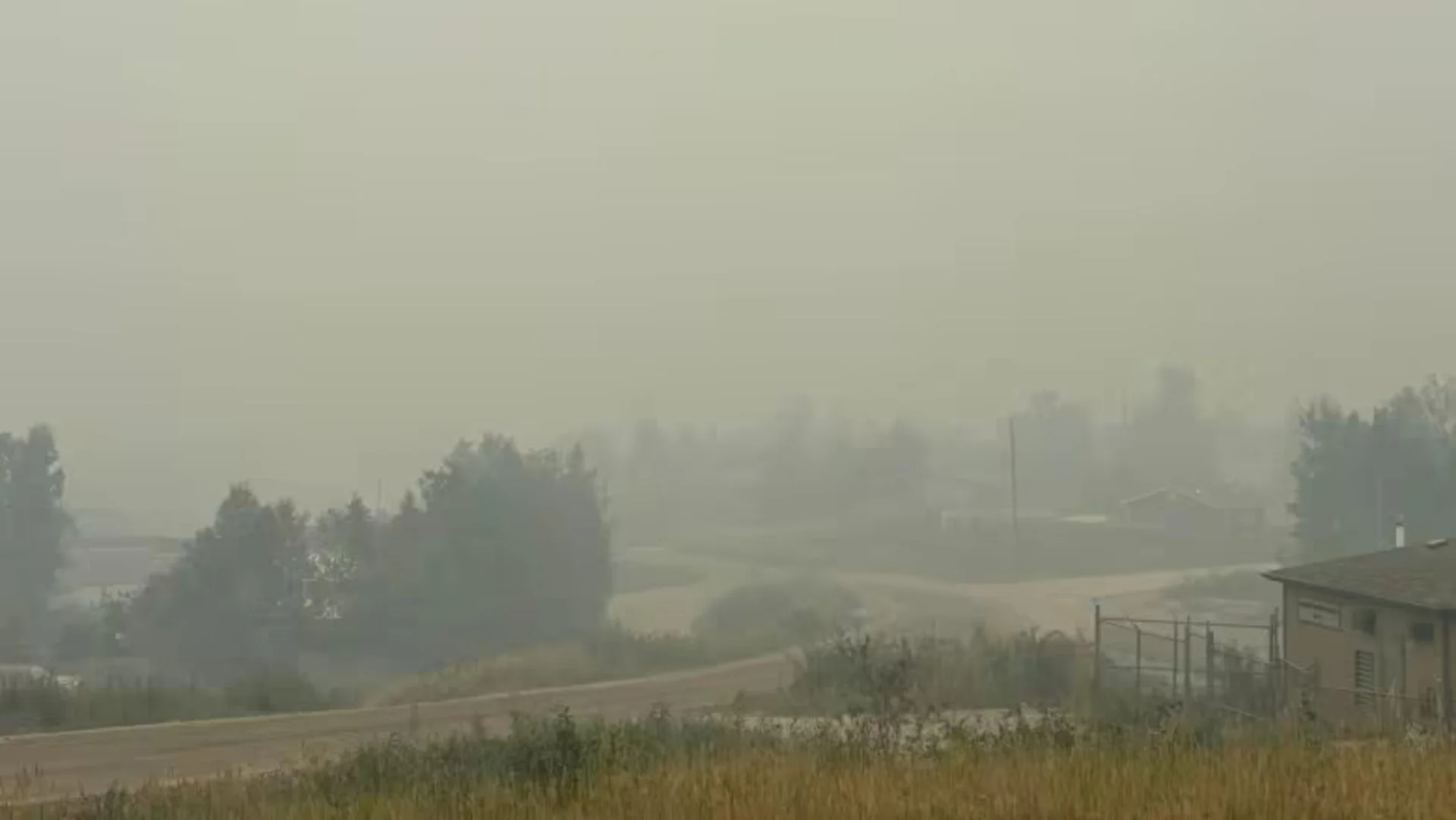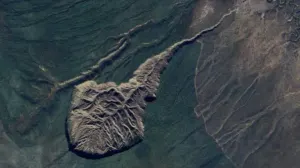
Hundreds forced to flee northern Sask. communities as wildfires approach
A trio of lightning-sparked wildfires in northern Saskatchewan have forced hundreds of people to flee from their homes and into southern cities this month, while other fires put pressure on others to leave as well.
But not all of those at risk have done so.
Tommy Bird is staying behind in Southend, a community of about 1,200 people approximately 515 kilometres northeast of Saskatoon. He was born and raised in Southend and co-owns Bird's Confectionary, the only gas station in town.
Bird is staying behind with his family to keep the fuel station running for those leaving the community.
"We are people of the north … and we're wired a little differently than the folks up in the big cities," he said.
"We will give a good battle before we run."
CANADA'S WILDFIRES: Visit The Weather Network's wildfire hub to keep up with the latest on the wildfire season across Canada.
On Wednesday, Peter Ballantyne Cree Nation issued an evacuation order for Southend. It's the second of the nine communities that make up Peter Ballantyne Cree Nation to have a full evacuation order issued in August because of northern wildfires.
Another of its communities, Sandy Bay, has been under an evacuation order for the past 12 days, said Peter Ballantyne Chief Peter Beatty.
Dozens of members were evacuated from a third, Deschambault Lake, due to the effects of heavy smoke.

A photo of the Flanigan fire afflicting Sandy Bay taken just after midnight on Aug. 16. Several hundred people have fled the community as a result of the fire. (Rachel Bear)
According to the Saskatchewan Public Safety Agency, the Merkley fire, approaching Southend, has grown to about 30,506 hectares (or about 305 square kilometres, spanning wider than Saskatoon).
Bird is concerned the fire could cut off access to Highway 102, the only southern access road from the community. That would mean no ground transportation for food or gas.
On Thursday evening, the Saskatchewan Highway Hotline showed the road was affected by fire, but not cut off.
By Thursday morning, more than 400 evacuees took that road to the Jonas Roberts Memorial Community Centre in La Ronge for soup, sandwiches and snacks on their longer journey south.
Kevin Roberts, the community centre's director of sports and recreation, said he was called about the evacuation Wednesday and got the staff together to prepare food for the evacuees.
"We're accustomed to dealing with situations like this. We always come together to lend a hand for our northern neighbours," he said.

More than 400 evacuees stopped Thursday at the Jonas Roberts Memorial Community Centre in La Ronge for soup, sandwiches and snacks on their longer journey south. (Submitted by Kevin Roberts)
The vice-president of operations for the Saskatchewan Public Safety Agency said the Southend evacuation was triggered because the Merkely fire was pushed northwest by a "not normal" weather system for the province.
"That finger of fire actually approached Highway 102. It did not cross at that time, but it came relatively close," said Steve Roberts.
The fire was within 20 kilometres of Southend at that point, he said.
"Our crews are on that fire. They've been holding that fire at the road, [and the] road has not been closed permanently."
There have been "intermittent closures" as crews worked in the area, or because smoke limited visibility, he said.
There's been no infrastructure loss, including power and telecommunication lines along that highway, said Roberts.
More resources needed to fight fires: chief
Peter Ballantyne Cree Nation held a virtual press conference late Thursday afternoon to provide updates on the three communities affected by the wildfires.
"We called for an evacuation and then the next morning, at 6 a.m., we went to discuss the logistics of getting those people out, as we had a very small window of opportunity," said Chief Beatty.
A mixture of coach buses and three school buses sent from La Ronge helped evacuate people to Prince Albert, Saskatoon and Regina.

Peter Beatty is the chief of Peter Ballantyne Cree Nation. He called on the provincial government to provide more resources to the northern communities to better fight wildfires. (CBC)
The chief also called on the provincial government to listen to First Nations more on wildfire response.
"These fires are not being given the resources that are needed to extinguish the fires, let alone manage them," he said.
"For the most part, these individuals that are trying to manage these fires, are using back burning, which is using a fire against fire, because they don't have the resources to put out the fire."
When contacted by CBC for a response, the Saskatchewan Public Safety Agency said it could not immediately provide a comment.
Wildfires in west
In Saskatchewan's northwest, Birch Narrows Dene Nation had previously been under an evacuation order, though its residents returned home after several days, according to Daryl Wright, emergency response plan co-ordinator for the Meadow Lake Tribal Council.
Now, English River First Nation — another Meadow Lake Tribal Council community, with its main offices in Patuanak, about 425 kilometres northwest of Saskatoon, is within range of another fire.
Wright said the wildfire is about eight to 10 kilometres from the community, and it appears that several homes east of Patuanak, as well as a trapping business, have been damaged.
The public safety agency could not confirm that structures had been damaged.
"The community is definitely concerned," Wright said. He said this is the third consecutive year of heavy forest fire action and evacuations in the region.
Header Image courtesy of Timothy Bird via CBC.
This article was originally written by Dayne Patterson and Liam O'Connor for CBC News.









